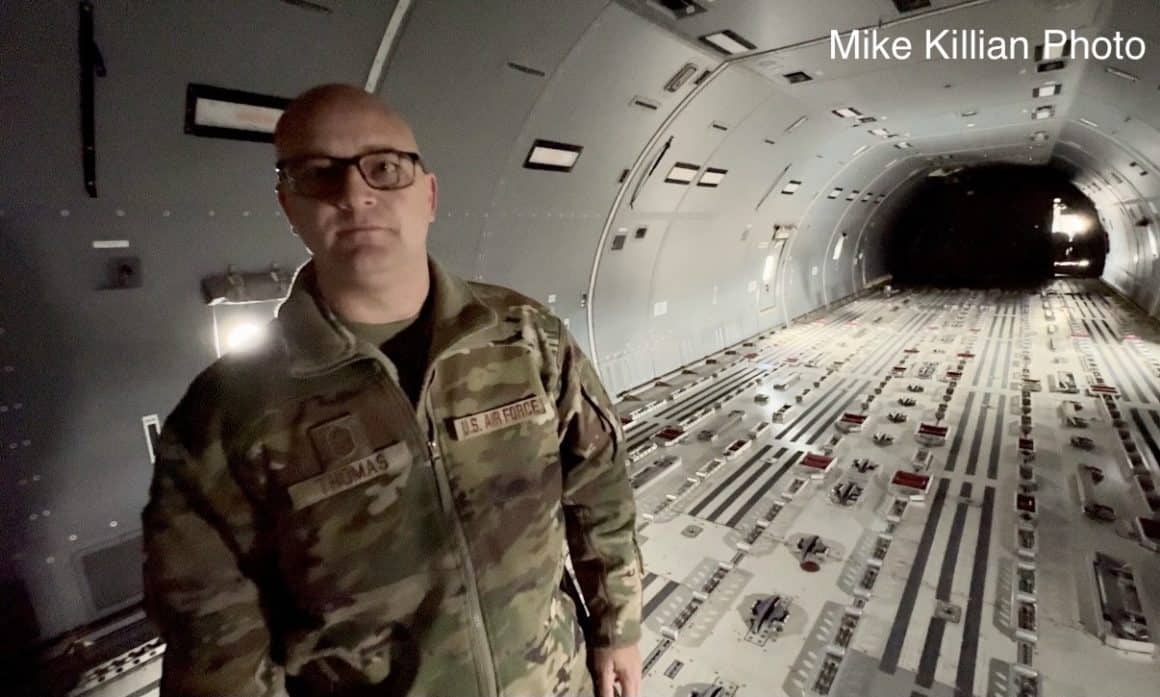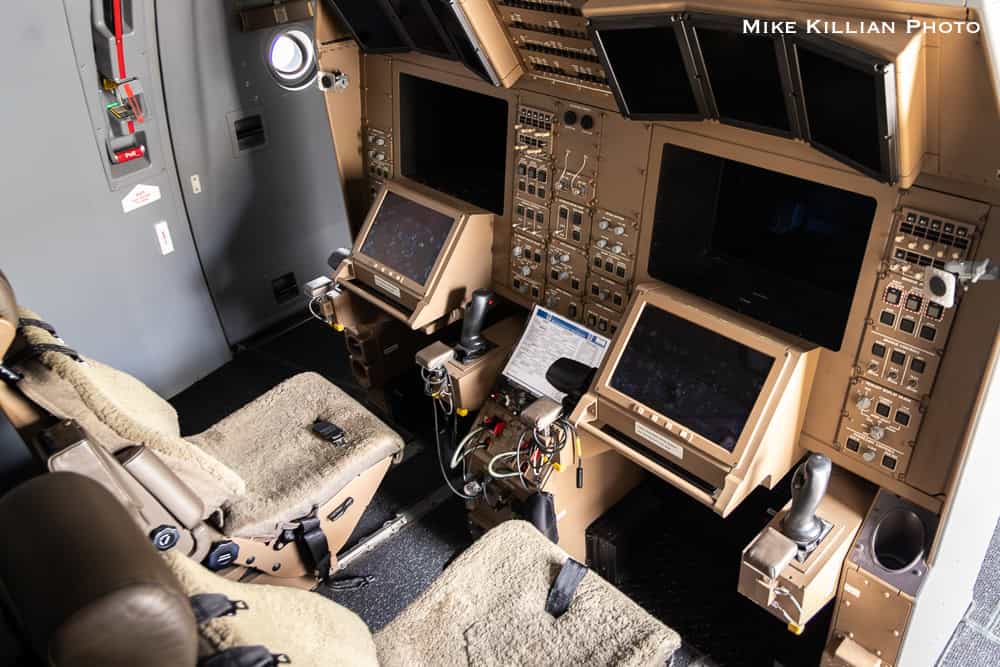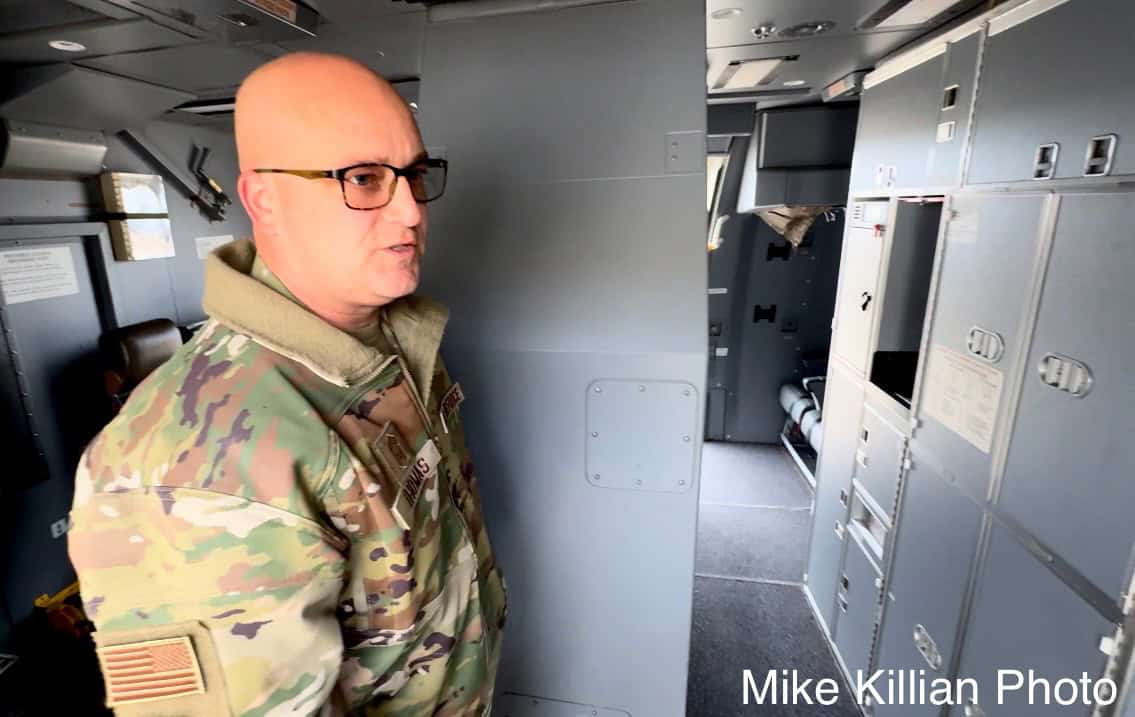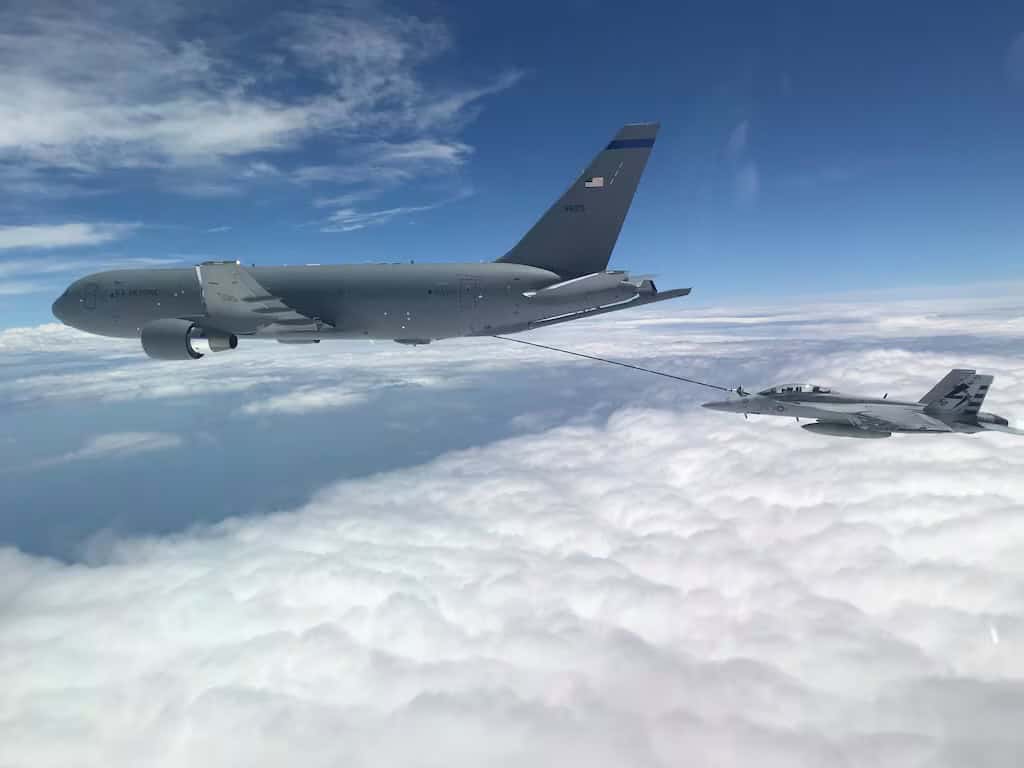In November 2024, we visited McConnell AFB for a KC-135 sortie to refuel the Thunderbirds. We also got to see the latest tanker in America’s fleet. Come on board a KC-46 Pegasus with us at McConnell AFB!
In the video below, watch as CMSgt Seth Thomas of the 931st Air Refueling Wing shows us the next era of tankers. He’s a senior enlisted leader at McConnell with 25 years of experience.
The folks at McConnell AFB are writing the book on KC-46 maintenance
America’s tanker fleet is aging quickly. In early 2024, the KC-10 flew its final mission and is now retired. Plans are also in motion for the KC-46 to also replace KC-135s, which will begin retiring in 2027.
McConnell is currently home to 18 KC-135 and 24 KC-46 tankers, supported by over 1,000 maintenance personnel.

The first KC-46 was delivered to McConnell in 2019. They are writing the book on maintaining and operating the Pegasus, even flying around the world with one earlier this year for 45 straight hours.
“With McConnell AFB being the main operating base #1 for the KC-46, a lot of things such as books and technical orders are written by our airmen here,” says Thomas. “Yes, Boeing has a maintenance plan. We translated those from the maintenance manuals that they have into the technical orders that the Air Force uses. So, a lot of the tools, the test equipment, and guidance that we use to do aircraft maintenance was done on the backs of our airmen at McConnell AFB.”

Pegasus is luxury compared to the old Stratotankers
Going on board a Pegasus, the most visible difference is how much more comfortable the crew is. Yes, it matters, especially in combat.
For example, gone are the days when the boom operator had to lie down in the back of the plane. Sure, it’s cool watching the aircraft receive fuel 20 feet from your face, but with modern tech, it’s just not necessary.

With the Pegasus, the boom operators now sit just behind the flight deck. Their station has comfy chairs and 3D screens, which they watch with 3D glasses, to see what they and the receiving aircraft are doing, thanks to external cameras.
So, which plane do boom operators like more?
”Opinions vary,” says Thomas. “Pegasus is more technologically advanced. It’s easier on the boom operator and much more comfortable. A KC-135 boom station can be quite hot or cold, and you’re lying down, but it’s more hands-on. You can feel everything moving, whereas the Pegasus is set up to refuel just visually with a remote system.”
Pegasus utilizes an advanced KC-10 boom, a center-mounted drogue, and wing aerial refueling pods. Thus, it can refuel multiple types of receiver aircraft, including foreign nationals, on the same mission. Some can refuel two planes simultaneously from special “pods” under the wings.
The plane also has much more comfortable seating and crew quarters. There is even a galley onboard, complete with refrigeration and a coffee maker.

The KC-46 is also equipped to fly other critical missions besides just refueling
The KC-46 is also multi-purpose. It can fly other missions as needed, such as transporting pallets of cargo or flying aeromedical evacuations.
”We can load up in the KC-46 and deploy anywhere in the world,” added Thomas. “We can bring our maintainers and all the parts and pieces we need to set up a forward operating base. Wherever that may be in the world, we can do that with the KC-46. A lot of times, if we’re refueling fighters going to the fight, we will fly there and pick up their maintainers and parts and equipment, and ferry their fighters to their forward location.”
The USAF intends to buy 179 KC-46s for $4.9 billion

The Air Force intends to buy 179 of the tankers from Boeing, under a $4.9 billion contract. Rollout of the Pegasus has not been without issue, as most of you have seen in the headlines over the last several years. However, the folks who work on and fly them see a bright future for the KC-46.
The Air Force is considering seven bases as the hub for the KC-46 and says it will make that decision by 2027. The first of eight planes is scheduled for delivery in 2031.

We also met CMSgt Craig Webb of the 22nd Air Refueling Wing, and had the opportunity to sit down with him and Thomas for a chat.
Taking care of both the Stratotanker and Pegasus
Below are some excerpts from our chat, published in Forbes by journalist Jim Clash, with whom we teamed up.

“There are shared challenges for both,” says Webb. “You might think the newer airplane is easier because there are plenty of manufacturers that make the parts. That’s not always the case. The more KC-46s we acquire, the more parts we need, and that projected need was all based on program-level decisions made 10-15 years ago.
“With the 135, sure, there are issues where companies making parts are now seeing demand go down. If there’s something else that’s a better business model, they are going to go there. Many have gone out of business, too.”

“Our biggest challenge, shared on both platforms, is integration. It’s easy to say the 135 is a 70-year-old airplane. However, of the components and systems on it, very few go back to the 1960s. Some of them are now from 2023 and 2024. The 135 doesn’t have the same engines and avionics as it used to. So how these new parts integrate with a 70-year-old airplane is challenging in itself.”
“The 46 is custom-built, with systems either military-specific or from variants of the 767. How those things integrate can be challenging, too.”
Our sincere thanks to both gentlemen for their time, as well as everyone at MConnell AFB serving our country.
